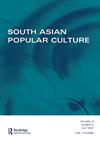‘Balla Ghooma Stadium jhooma’: Shifting discourse of cricket commentary in India
IF 0.3
0 ASIAN STUDIES
引用次数: 0
Abstract
ABSTRACT Broadcasting commentary has developed a unique relationship with cricket wherein it performatively mediates the changing discourse that surrounds the game. Although, the social history of cricket in India has gained a considerable academic space, the cultural history of cricket commentary in India remains a fairly uncharted territory. The paper by placing it within the cultural studies framework attempts to trace cricket’s auratic presence in the popular imagination. Cricket’s acculturation in India is unique to its radio sonic mapping, televisual spectacle and its experience with modernity. It argues how the cultural economy of cricket through radio and television commentary, covering cricket’s varied format over the years constantly informed and negotiated its linguistic, cultural and economic registers. The attempt is to foreground the ways in which its distinct structures of listening experience uniquely fostered decolonisation and indigenous appropriation of the game. Above all, interpreting the materialistic aesthetics of the broadcast medium, the shifting trajectory of cricket broadcast delineates how IPL’s subcultural sporting codes challenges the discursive ‘Englishness’ of cricket. What anchors in IPL through the playful transaction of the contemporary cricket culture, especially, through commentary, is the tension between global cultural reproduction and the forces of indigenisation at work.' Balla Ghooma体育场jhooma ':印度板球评论的转变话语
摘要广播解说与板球发展了一种独特的关系,在这种关系中,它以表演的方式调节着围绕比赛不断变化的话语。尽管印度板球的社会史已经获得了相当大的学术空间,但印度板球解说的文化史仍然是一个相当未知的领域。本文将其置于文化研究框架内,试图追溯板球在大众想象中的光环存在。板球在印度的文化适应是其独特的无线电声音地图、电视奇观和现代体验。它通过广播和电视评论讨论了板球的文化经济,涵盖了板球多年来的各种形式,不断了解和协商其语言、文化和经济记录。这一尝试是为了突出其独特的聆听体验结构独特地促进游戏的非殖民化和本土挪用的方式。最重要的是,在解释广播媒体的唯物主义美学时,板球广播的变化轨迹描绘了IPL的亚文化体育准则如何挑战板球的散漫“英国性”。IPL通过当代板球文化的有趣交易,尤其是通过评论,锚定了全球文化复制和工作中的本土化力量之间的紧张关系。
本文章由计算机程序翻译,如有差异,请以英文原文为准。
求助全文
约1分钟内获得全文
求助全文
来源期刊

South Asian Popular Culture
Arts and Humanities-Visual Arts and Performing Arts
CiteScore
1.00
自引率
0.00%
发文量
29
 求助内容:
求助内容: 应助结果提醒方式:
应助结果提醒方式:


